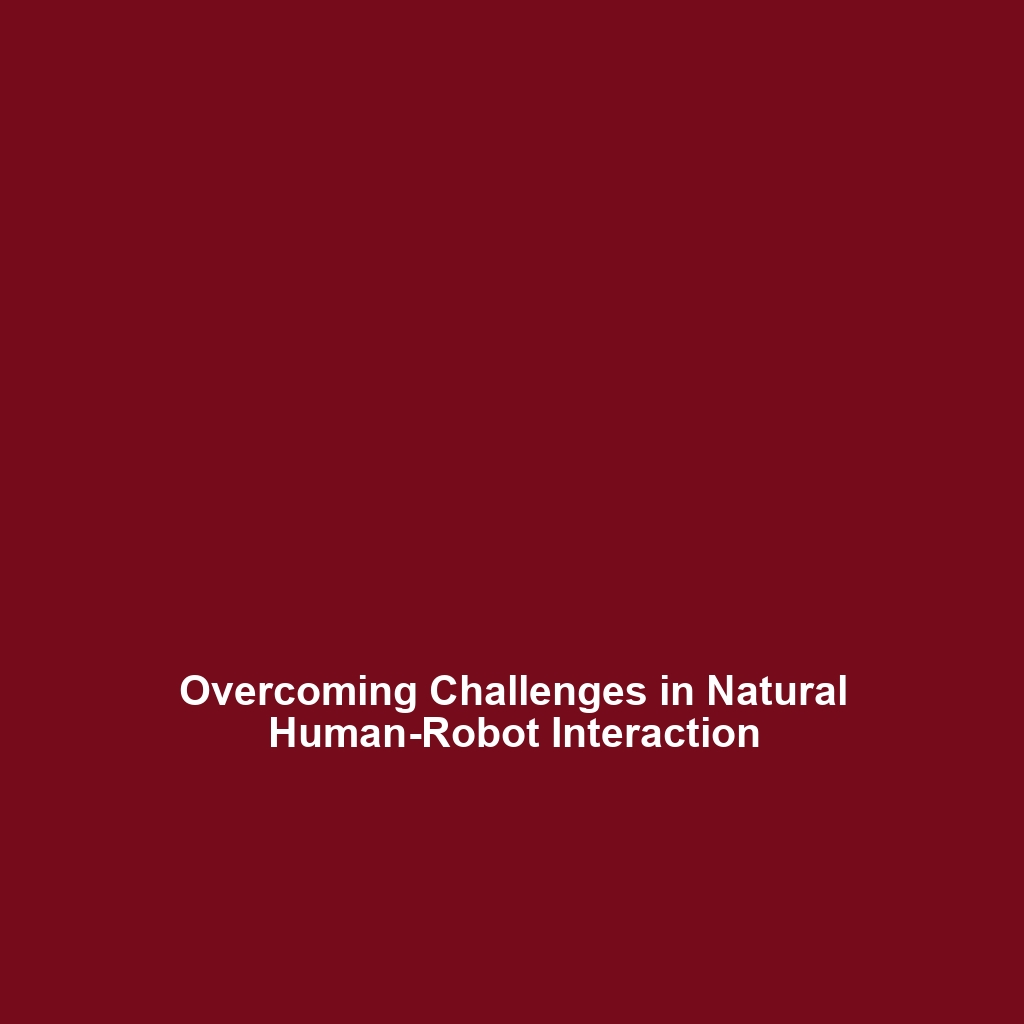The Challenges of Creating Humanoid Robots: Natural and Intuitive Interaction
Humanoid robots represent the forefront of artificial intelligence and robotics, evolving rapidly to interact more naturally and intuitively with humans. The challenges of creating robots that can successfully communicate and engage with people lie at the heart of this technological advancement. Understanding these challenges not only enhances the development of humanoid robots but also shapes their integration into society, making this topic critical for both researchers and practitioners in the field.
Key Concepts in Humanoid Robot Interaction
Several major concepts detail the challenges of creating robots that interact naturally and intuitively with humans, including:
- Social Intelligence: The ability of robots to understand and respond to human emotions and social cues.
- Natural Language Processing: Enabling robots to comprehend and produce human language in a manner that feels conversational.
- Physical Interaction: Creating robots that can perform physical gestures and movements that are relatable to humans.
- Contextual Awareness: Developing systems that allow robots to perceive and adapt to their environments and the actions of humans.
These concepts highlight the multidisciplinary efforts required to overcome the challenges faced in the realm of humanoid robots.
Applications and Real-World Uses
The challenges of creating robots that interact naturally and intuitively have led to a variety of practical applications, such as:
- Cognitive Assistants: Robots utilized in healthcare settings to assist elderly patients with daily tasks while providing companionship.
- Customer Service: Humanoid robots employed in retail environments to enhance customer interaction and support.
- Education: Using robots as teaching aides to engage students in learning through interactive methods.
These examples illustrate how the challenges of creating robots that interact naturally contribute to enhancing human experiences in numerous sectors.
Current Challenges in Humanoid Robot Interaction
Despite significant advancements, several challenges persist in creating robots that interact intuitively with humans:
- Emotional Recognition: Difficulty in accurately recognizing and interpreting human emotions.
- Integration of AI: The complexity of combining various AI technologies into a unified, functioning robot.
- Ethical Concerns: Addressing privacy issues and ethical implications of humanoid robot interactions.
- Cultural Sensitivity: Ensuring robots can adapt to various cultural norms and expectations.
Future Research and Innovations
The future of humanoid robots looks promising, with numerous innovations on the horizon aimed at addressing the challenges of natural and intuitive interactions. Some exciting areas of research include:
- Enhanced AI Algorithms: Development of more advanced algorithms for understanding human emotional and social dynamics.
- Deep Learning Techniques: Utilizing deep learning to better comprehend and process natural language and physical cues.
- Robotic Ethics Frameworks: Establishing ethical guidelines for humanoid robot interactions to ensure responsible usage.
These innovations have the potential to dramatically improve the effectiveness and acceptance of humanoid robots in day-to-day human interactions.
Conclusion
In summary, the challenges of creating robots that interact naturally and intuitively are crucial for the advancement of humanoid robots, which can potentially revolutionize areas such as healthcare, education, and service industries. Addressing these challenges through ongoing research and innovation will pave the way for more sophisticated and engaging humanoid robots. For further reading on advanced AI technologies, visit our advanced AI technologies page and explore how they are shaping the future of robotics.
